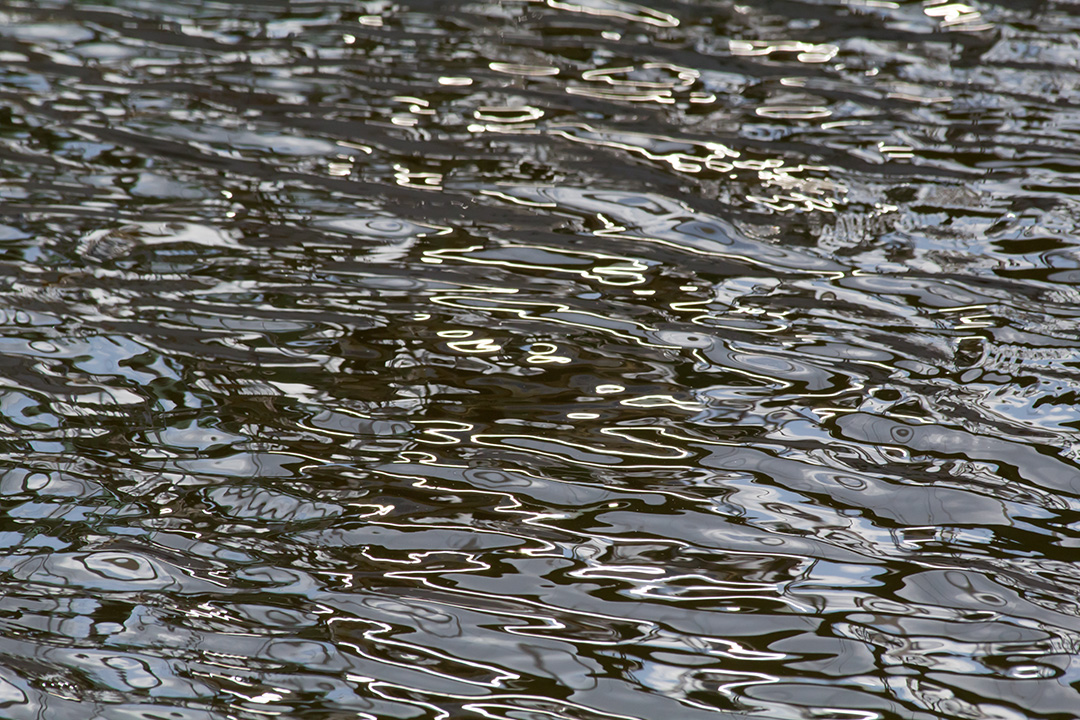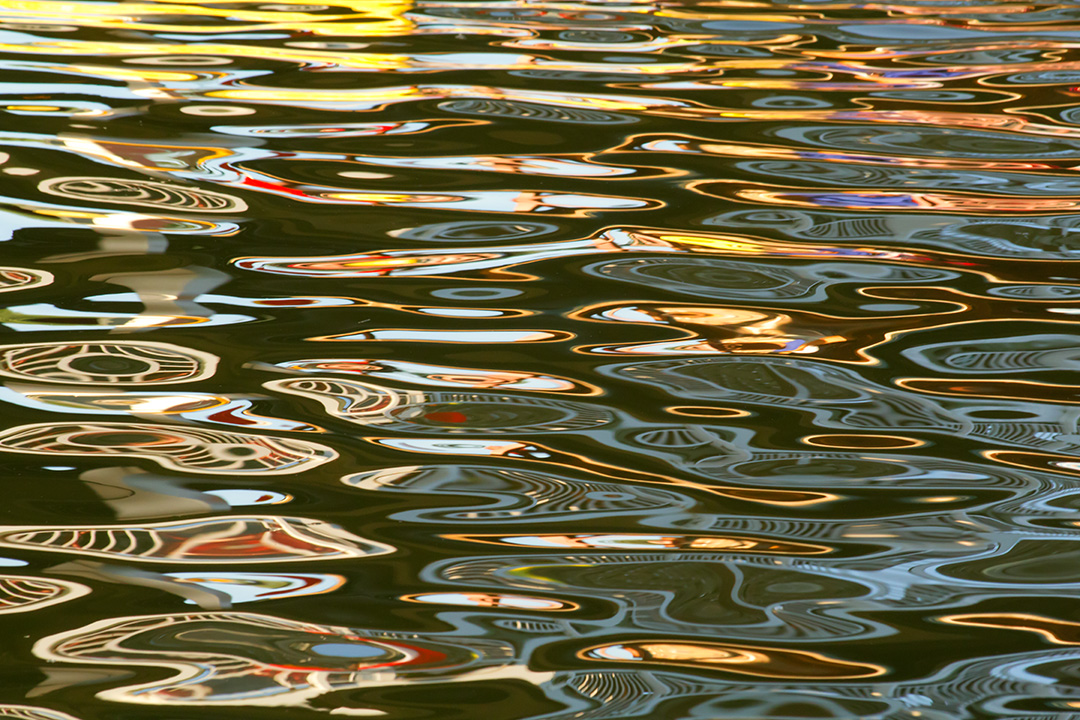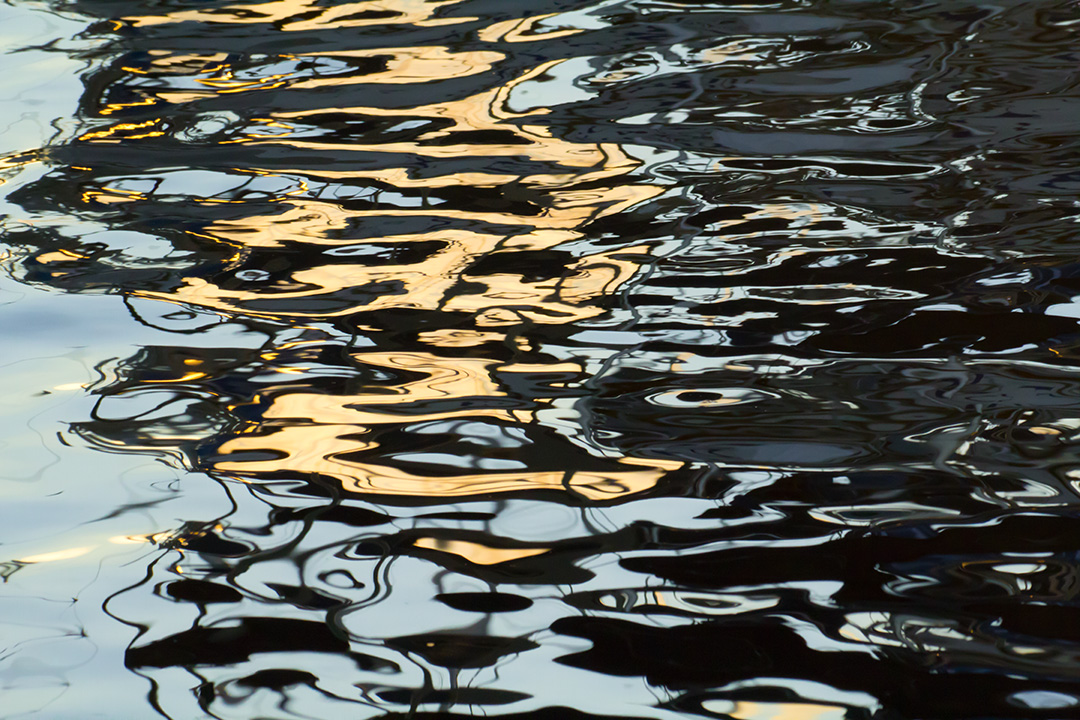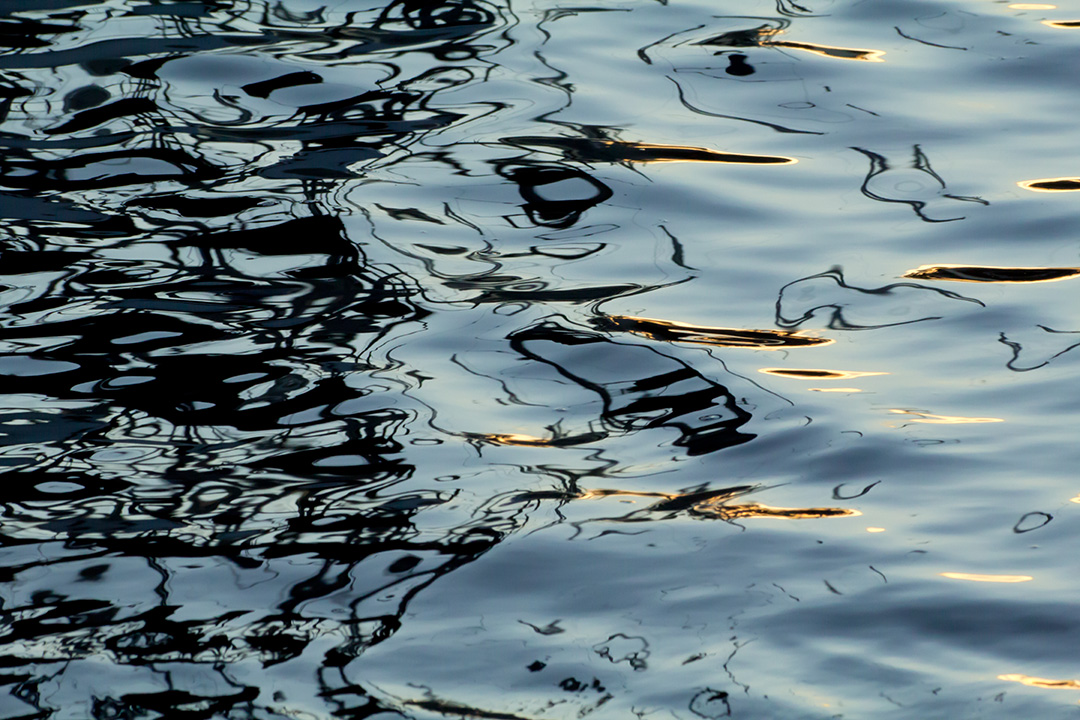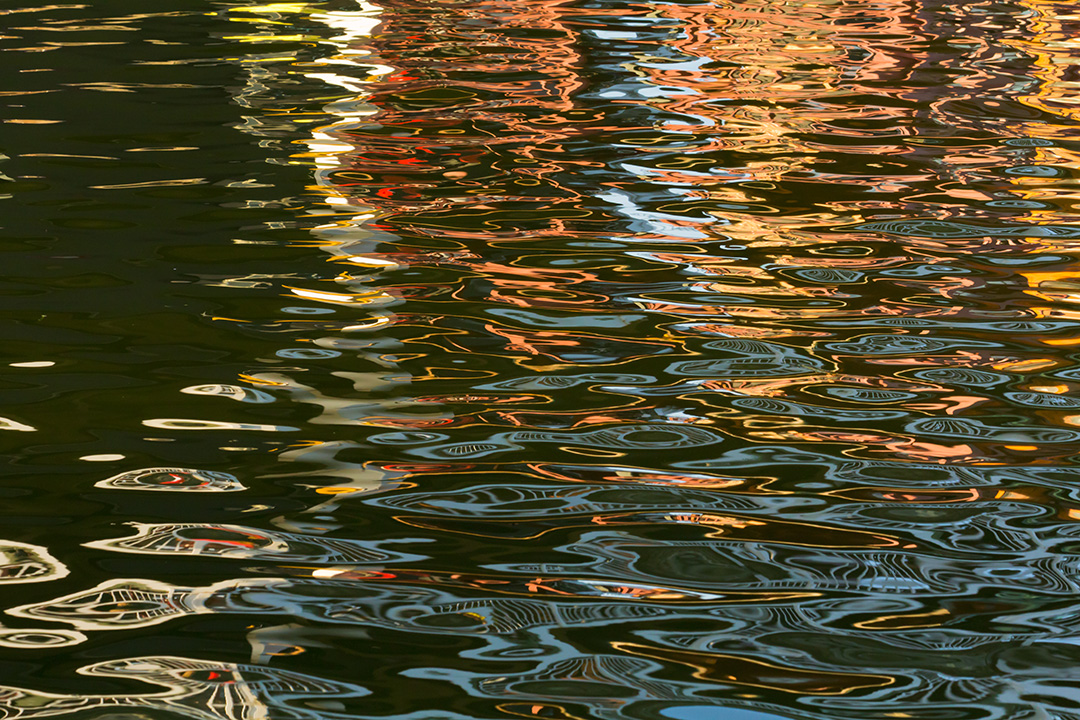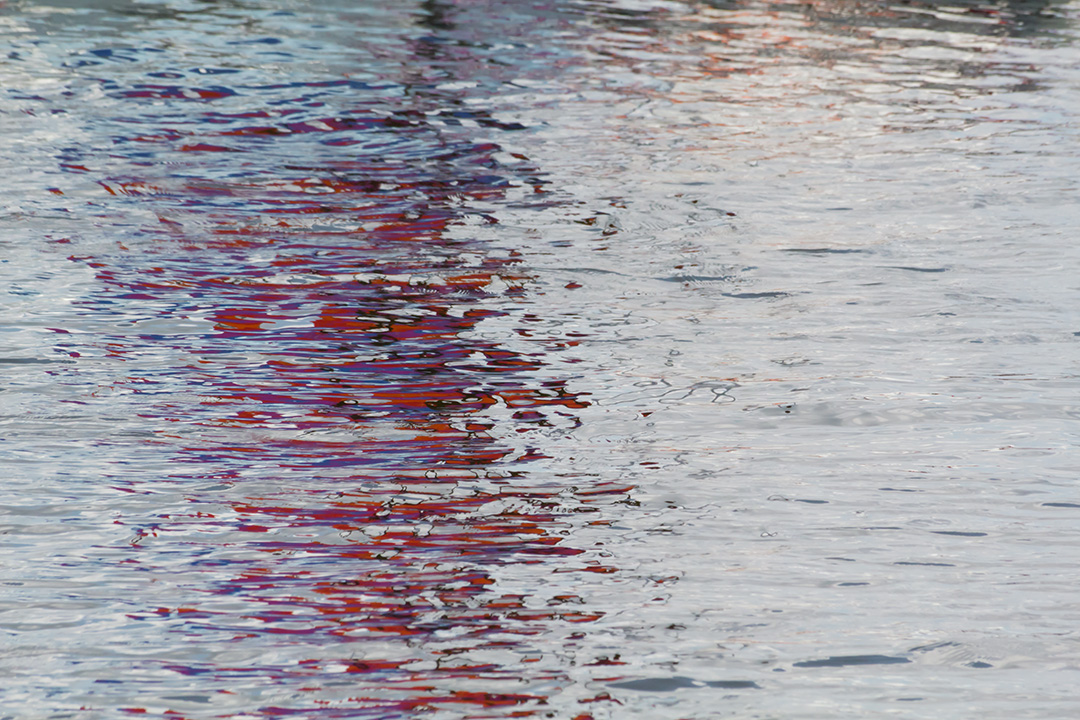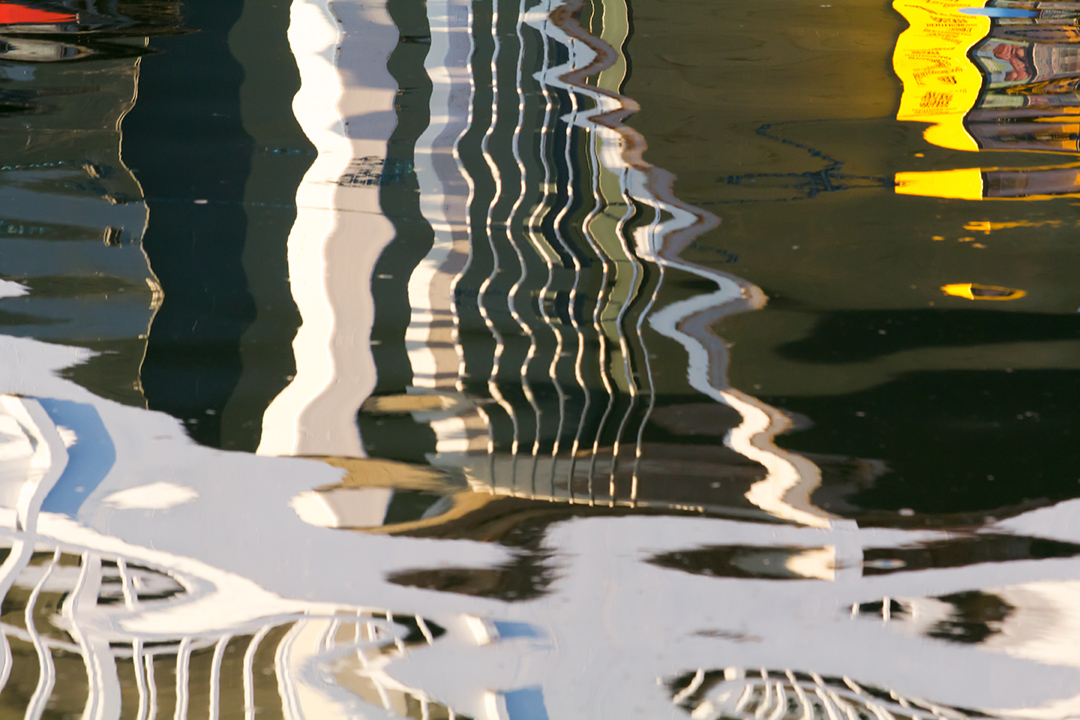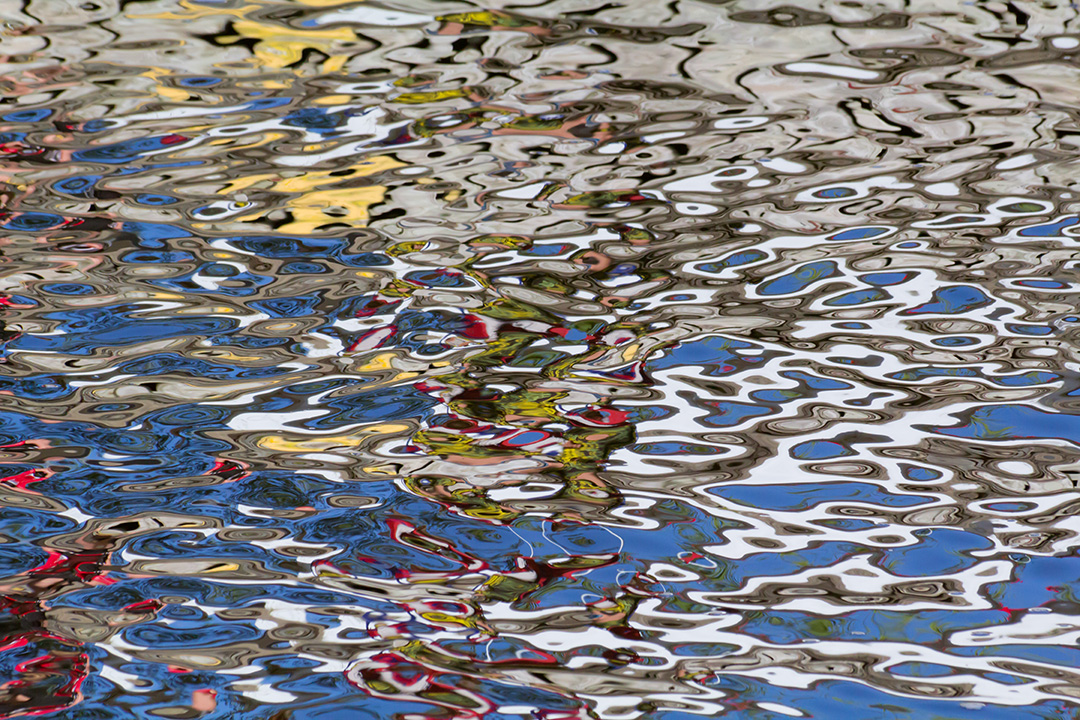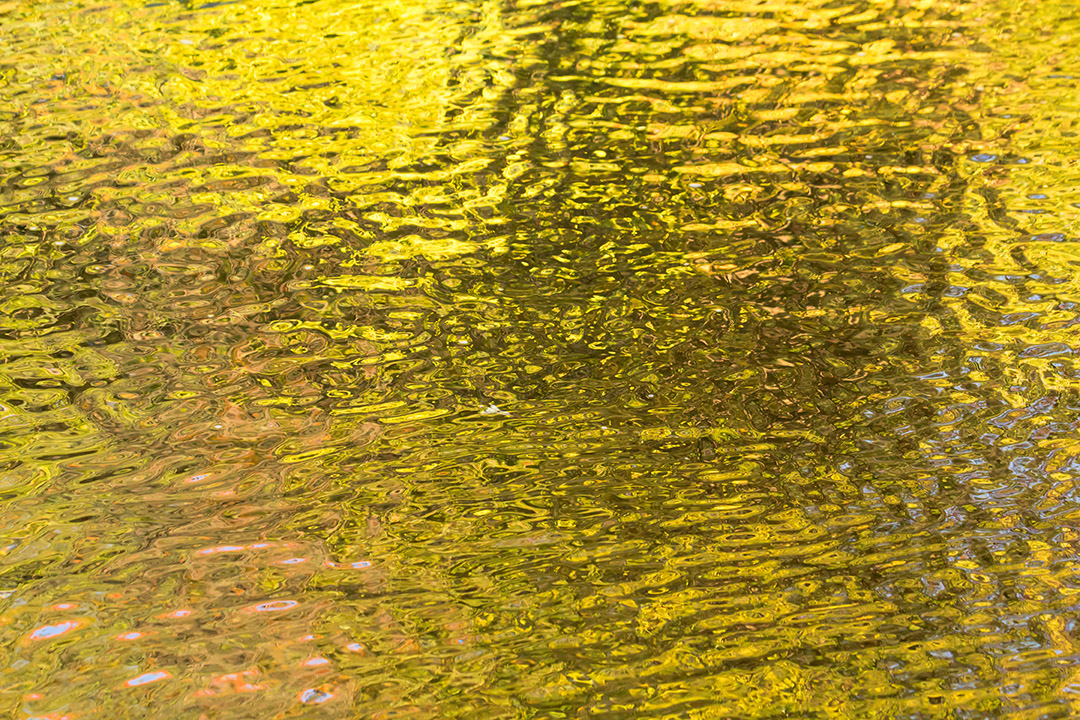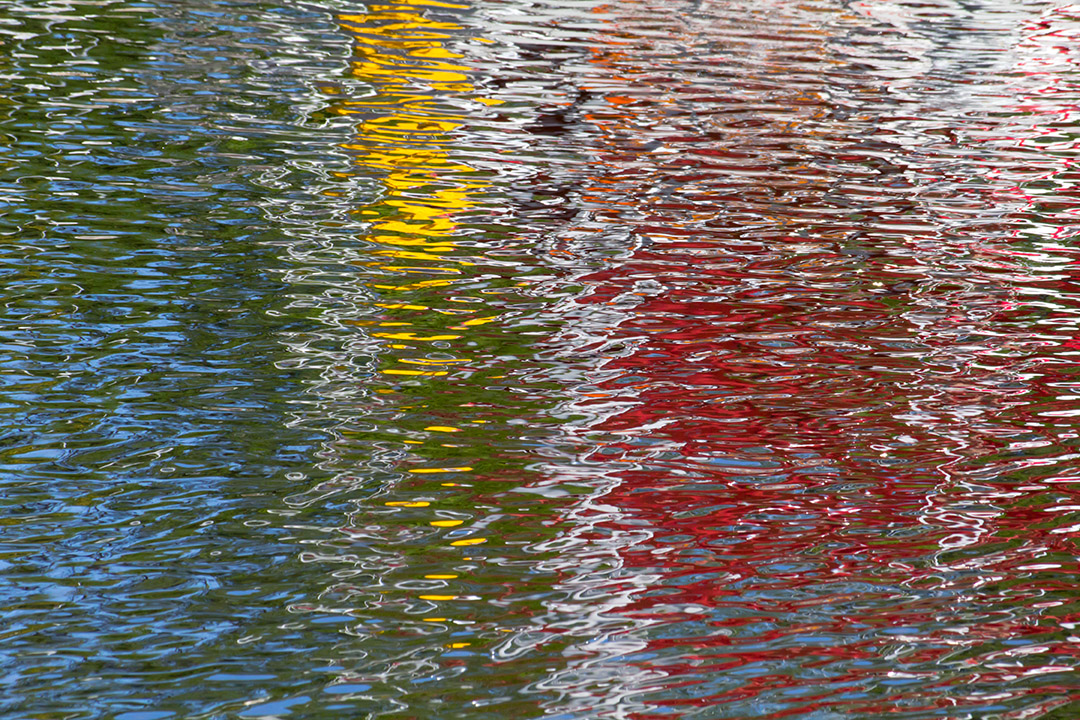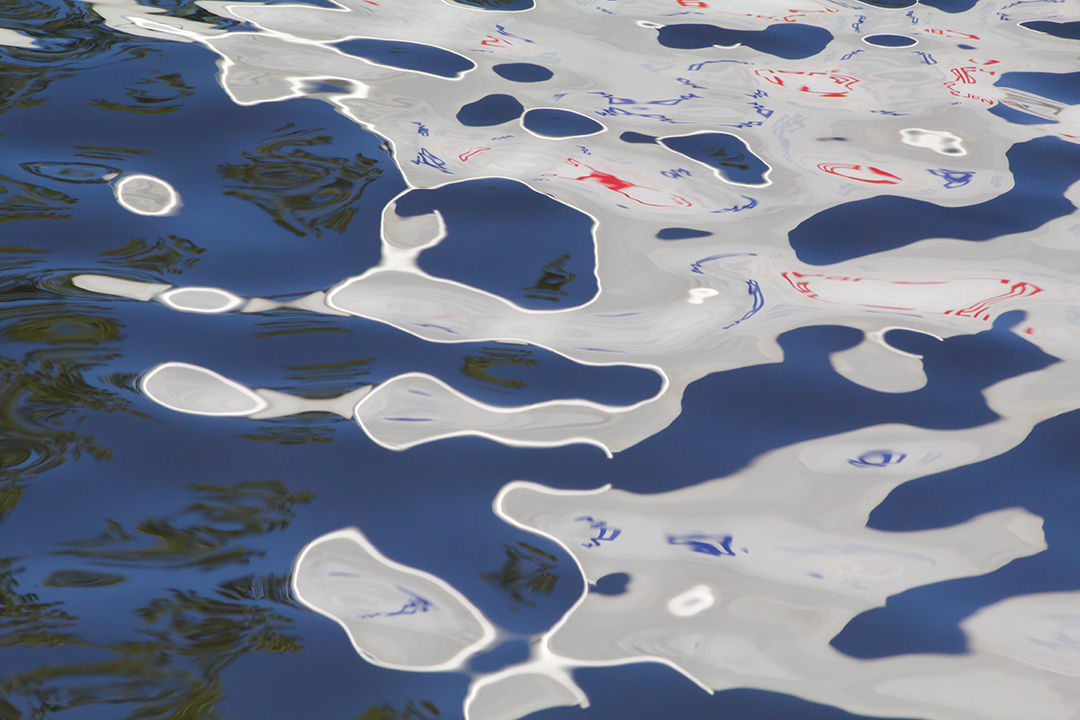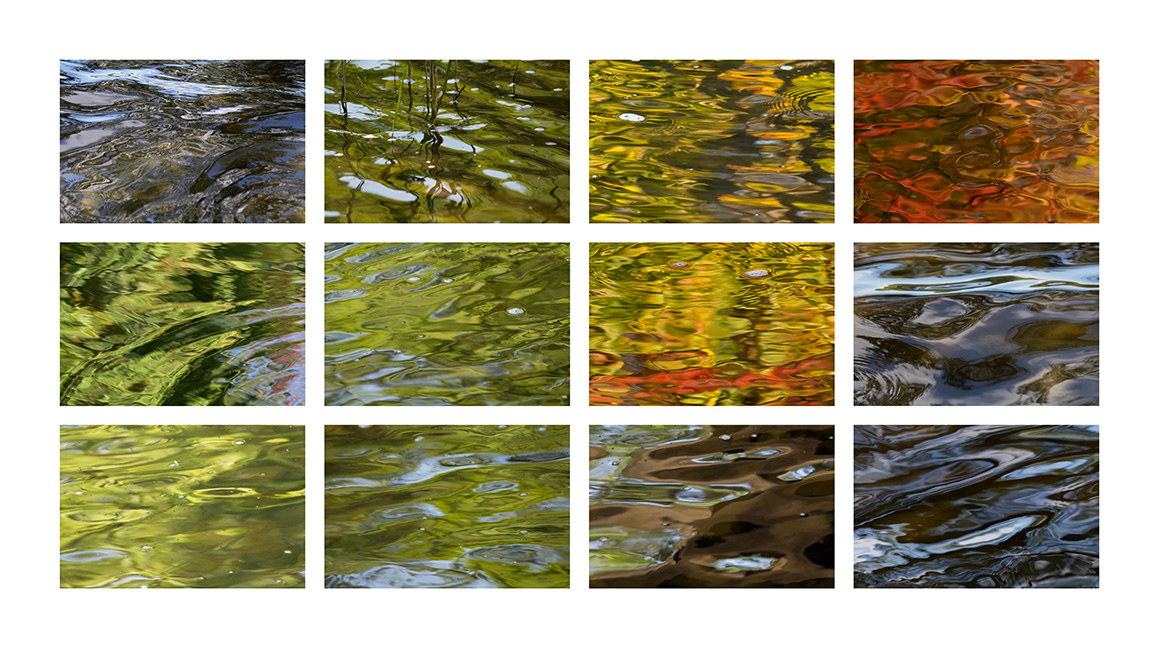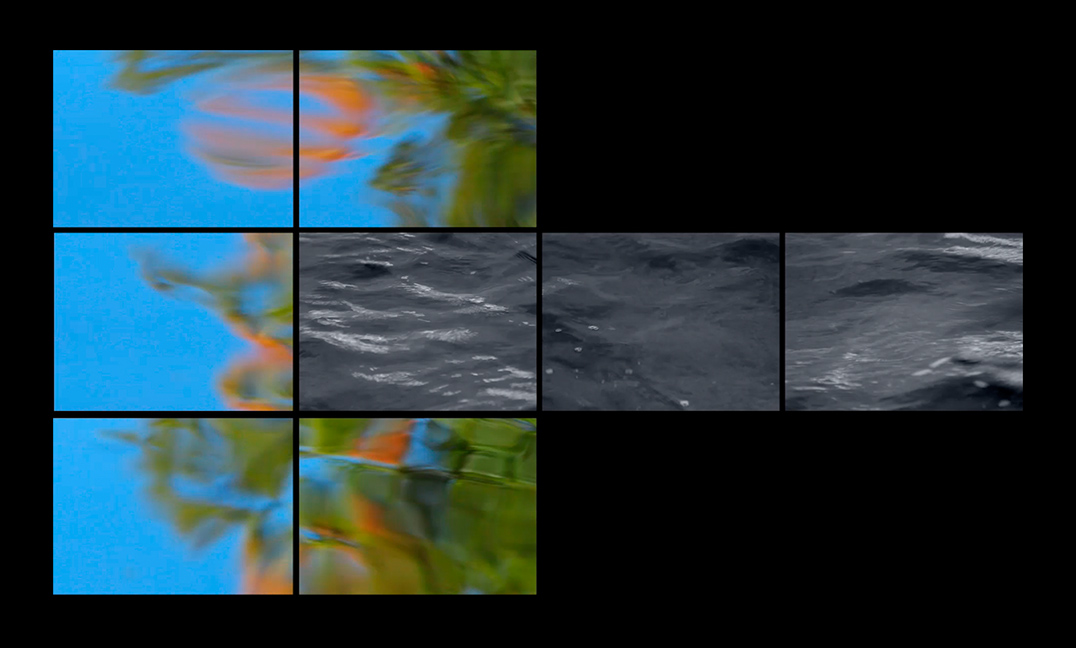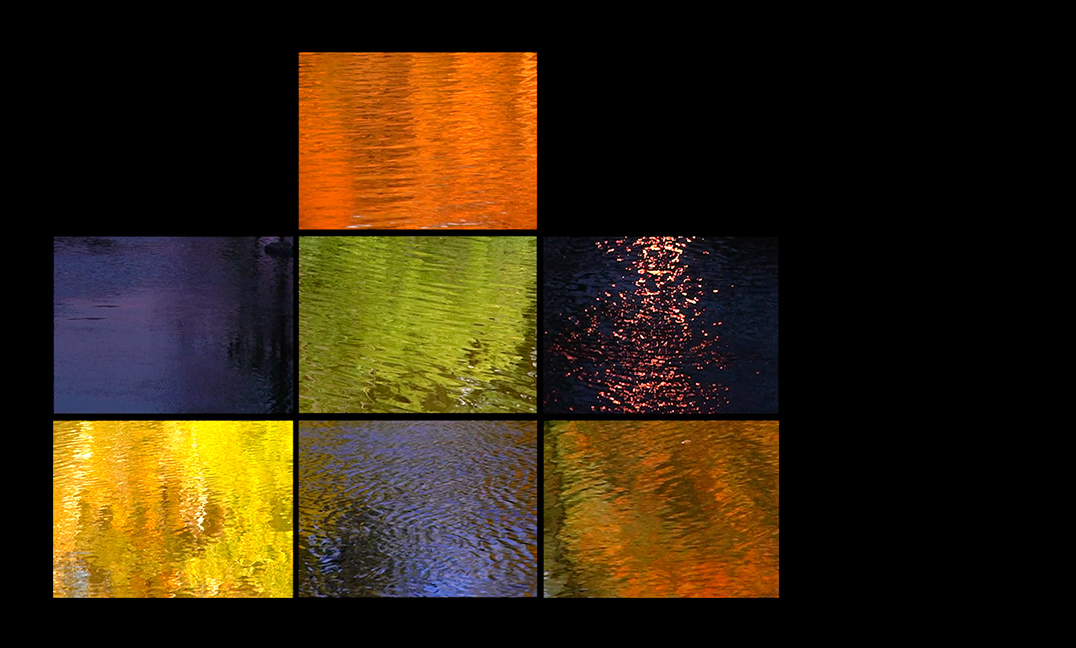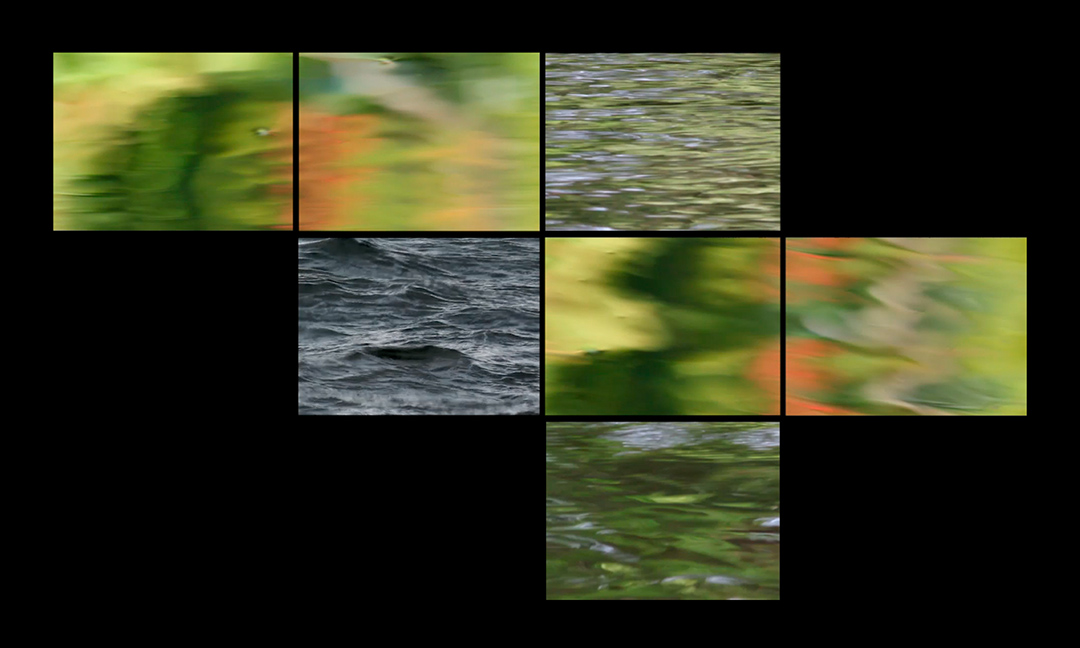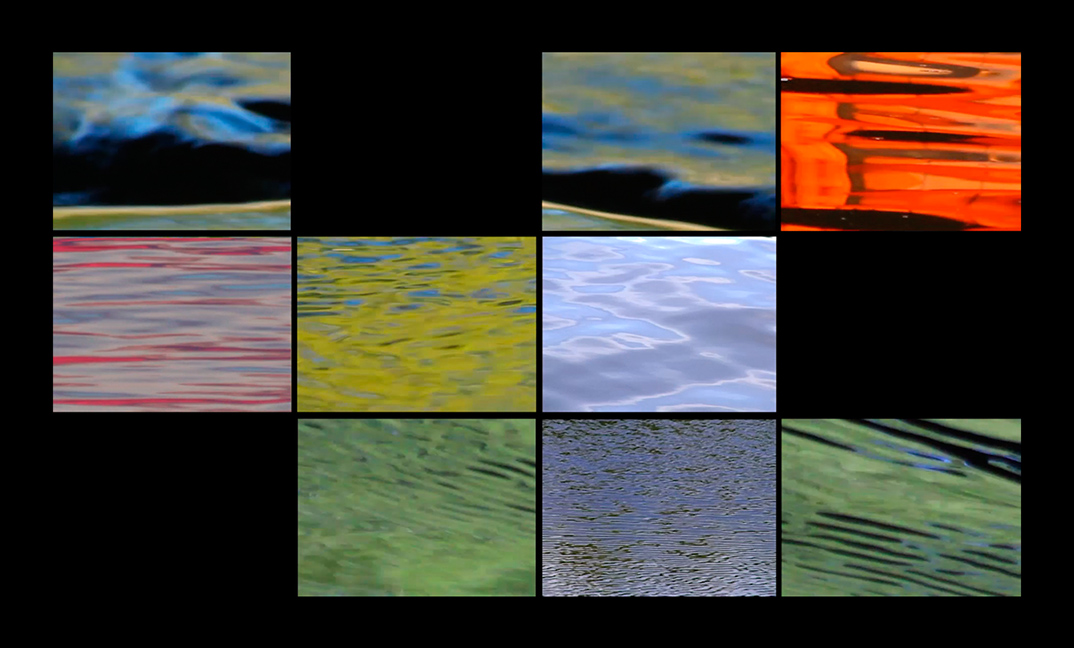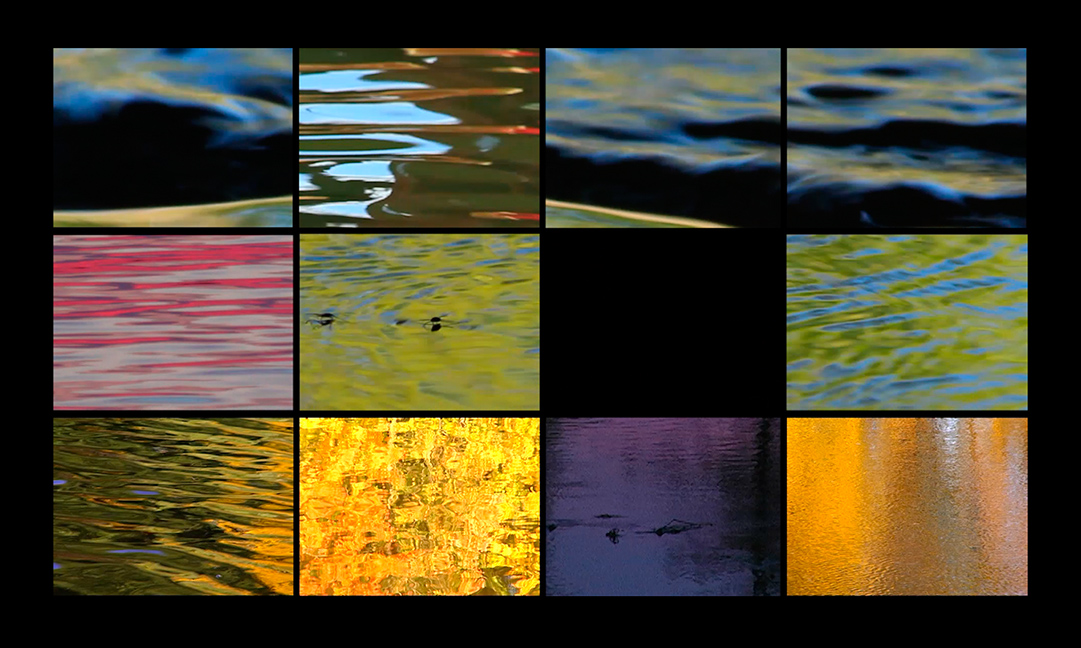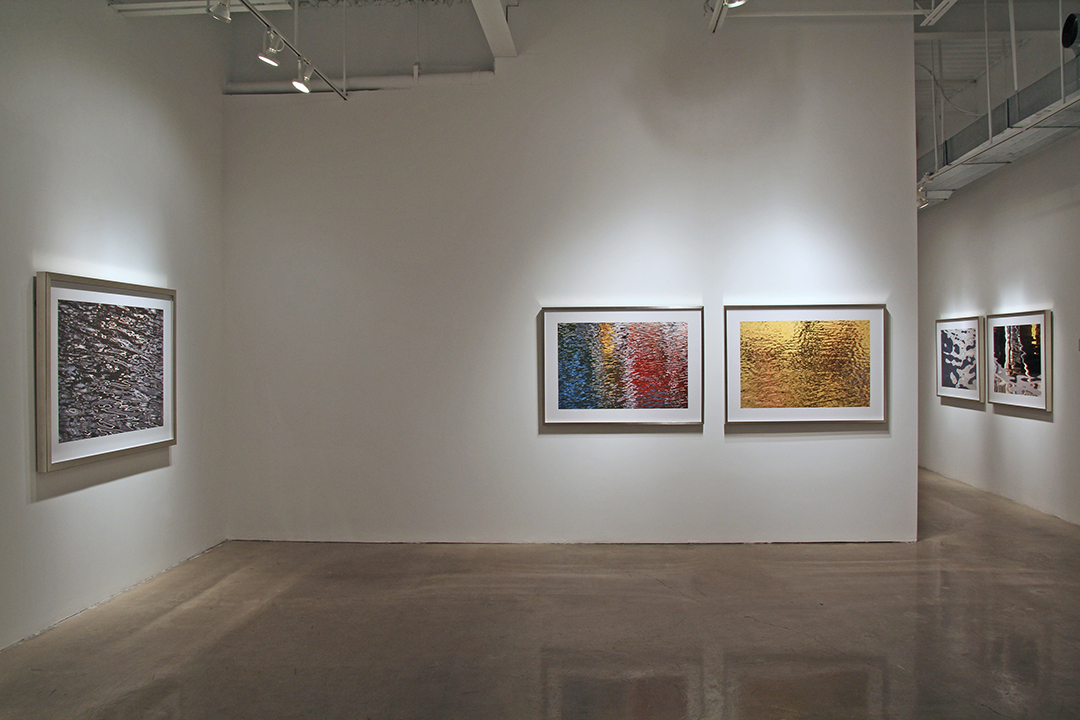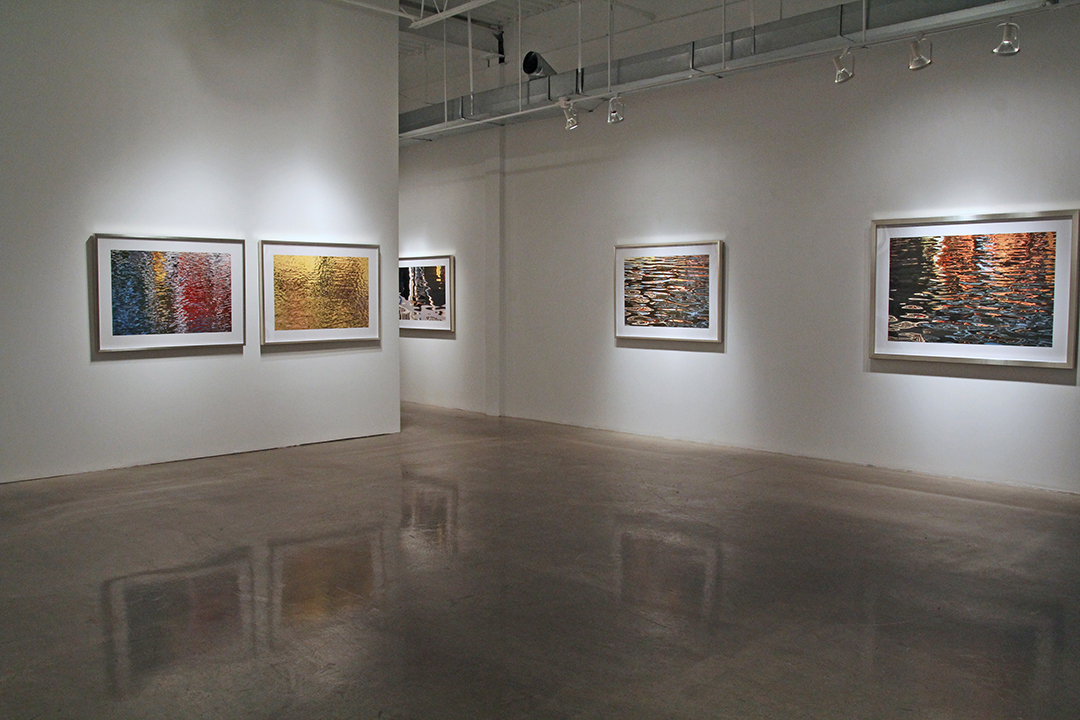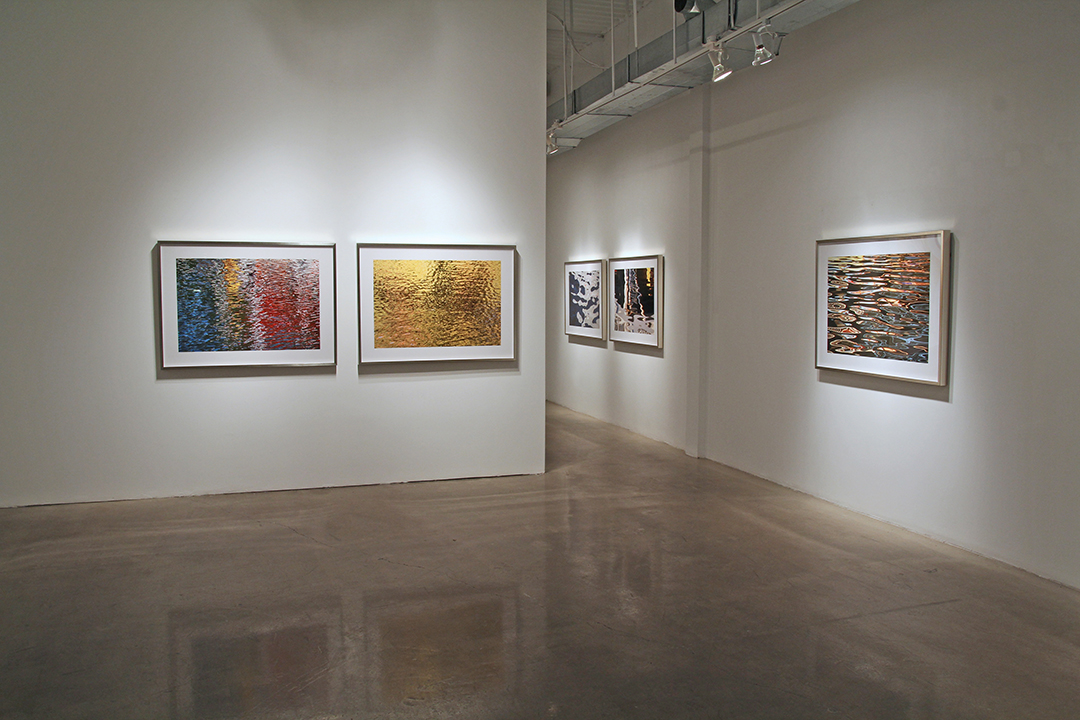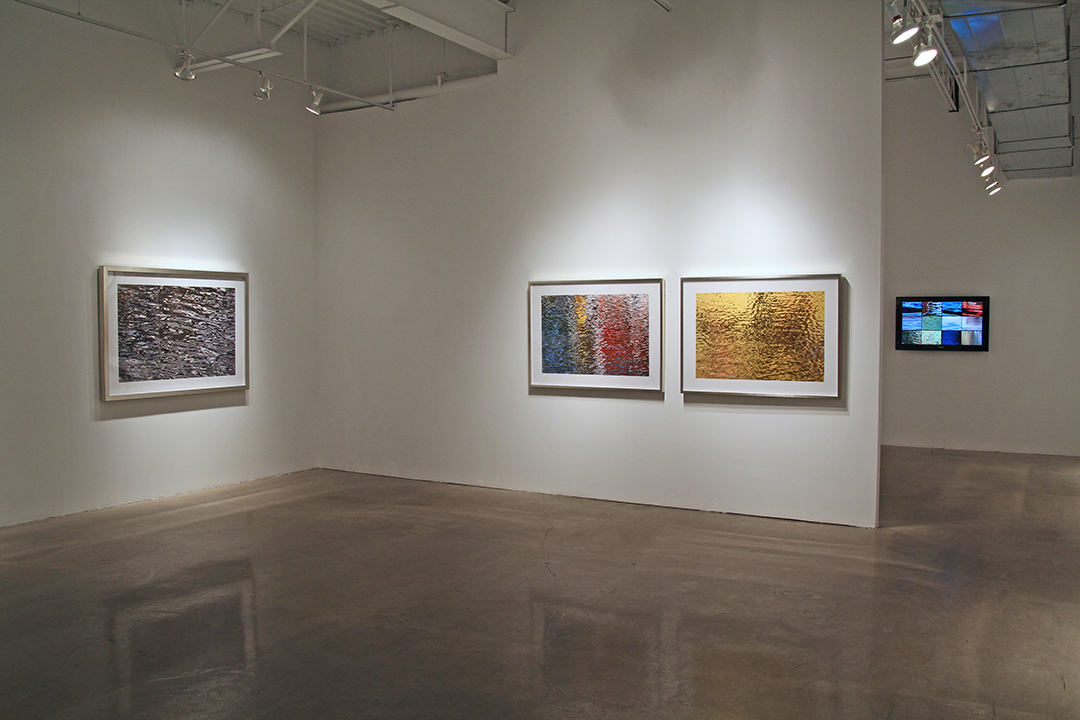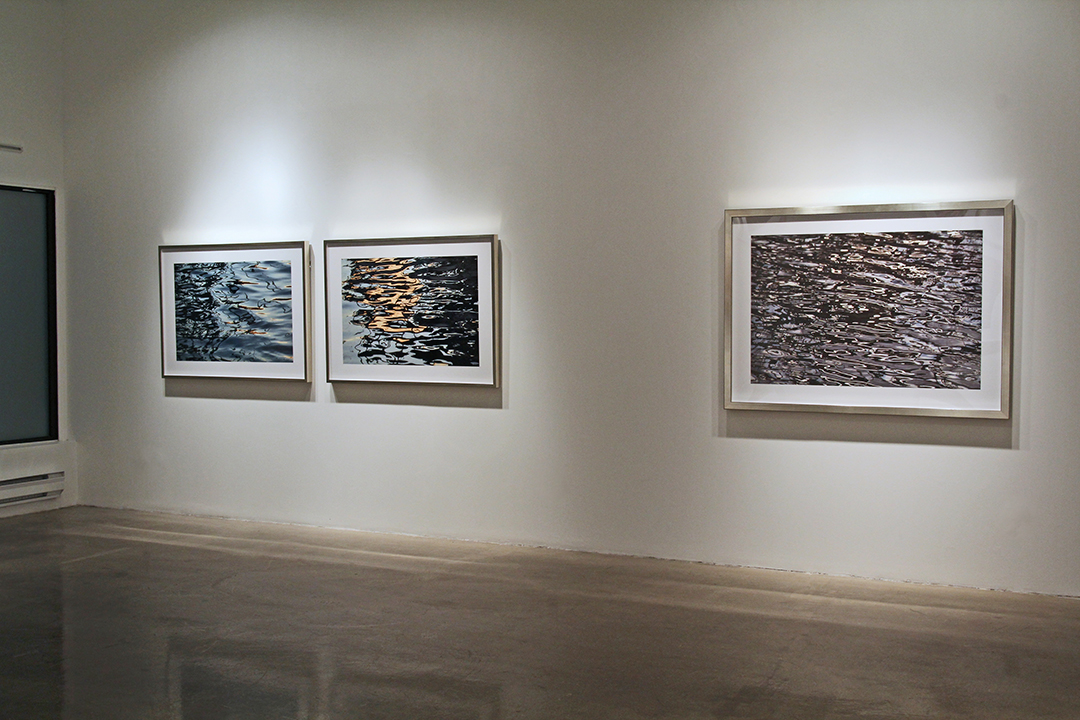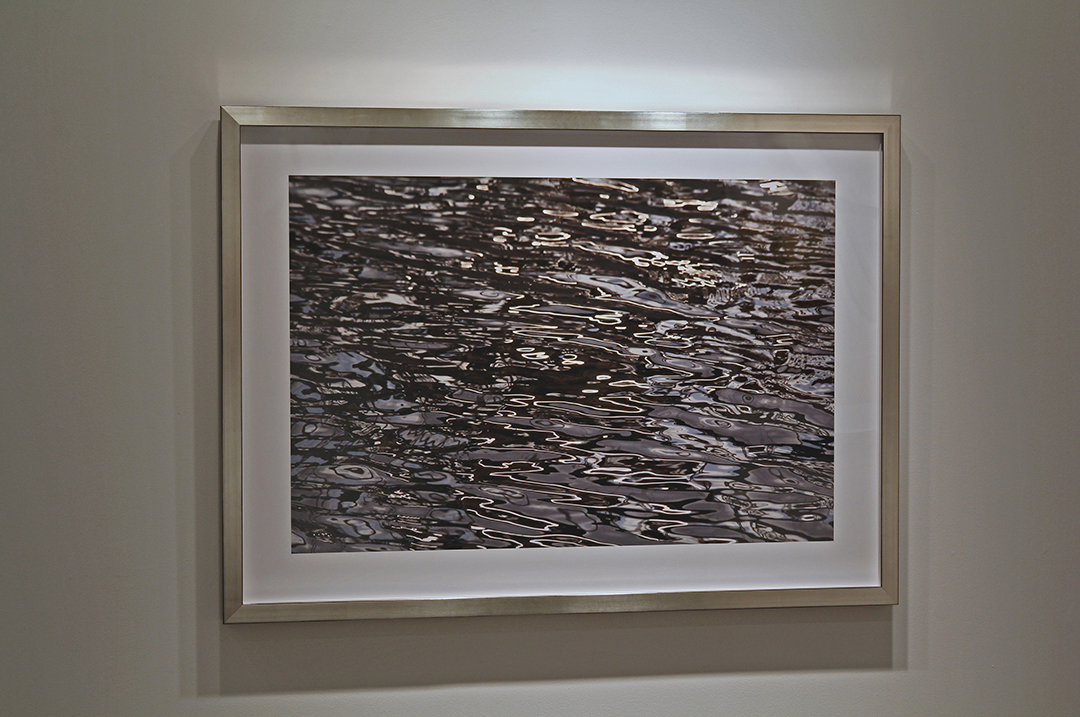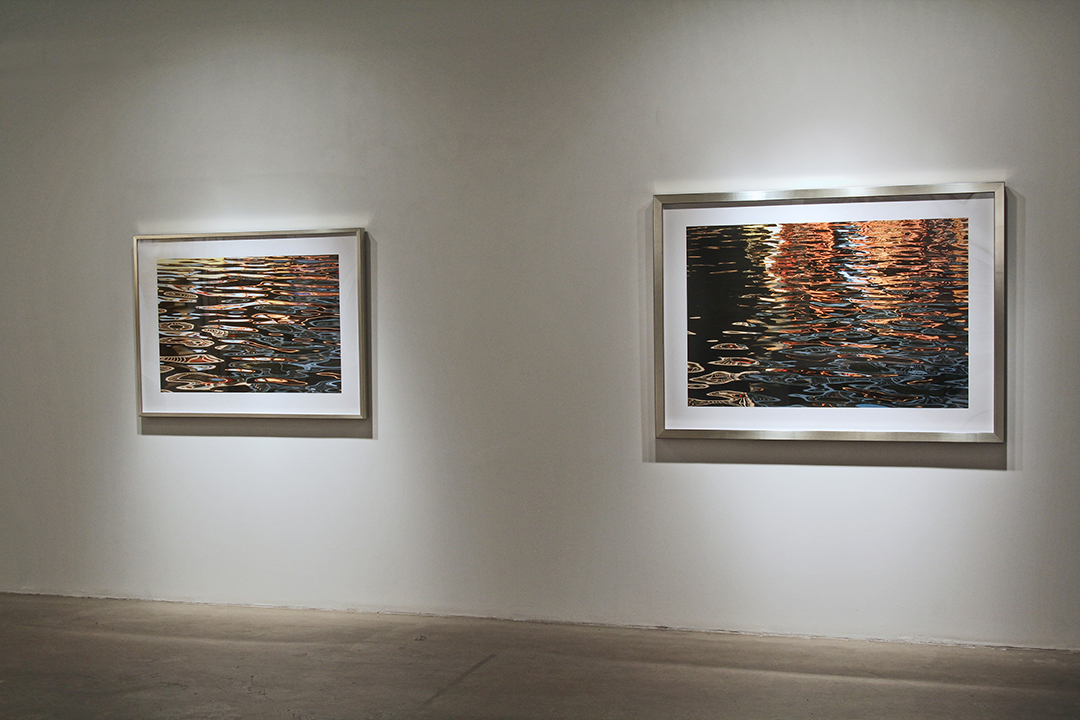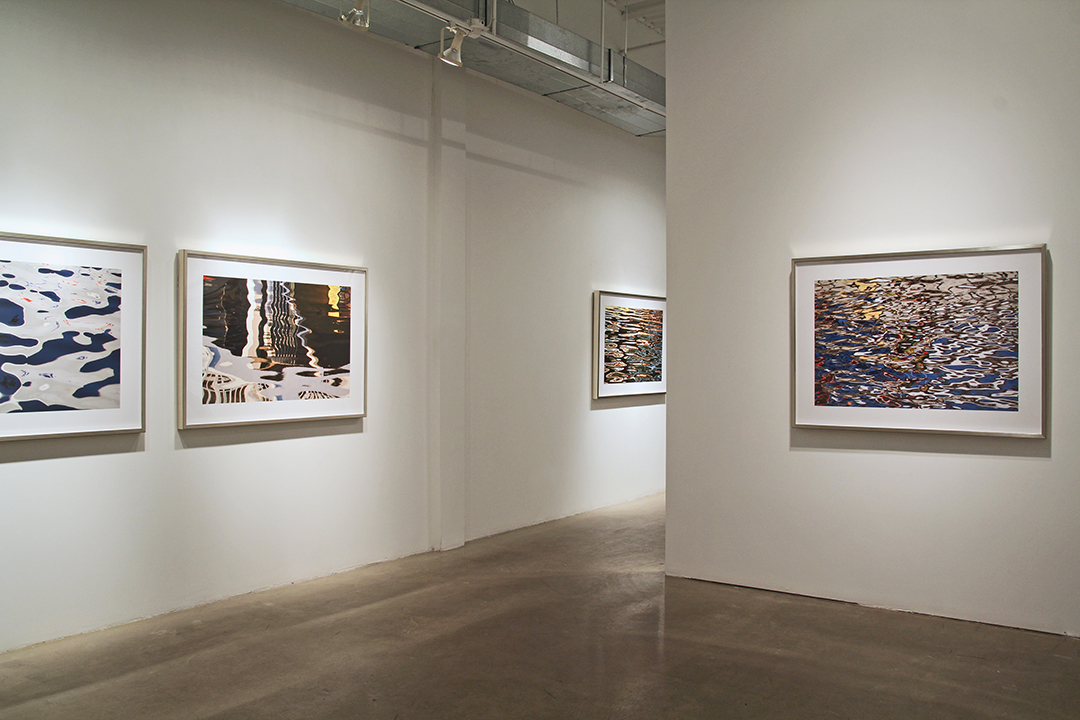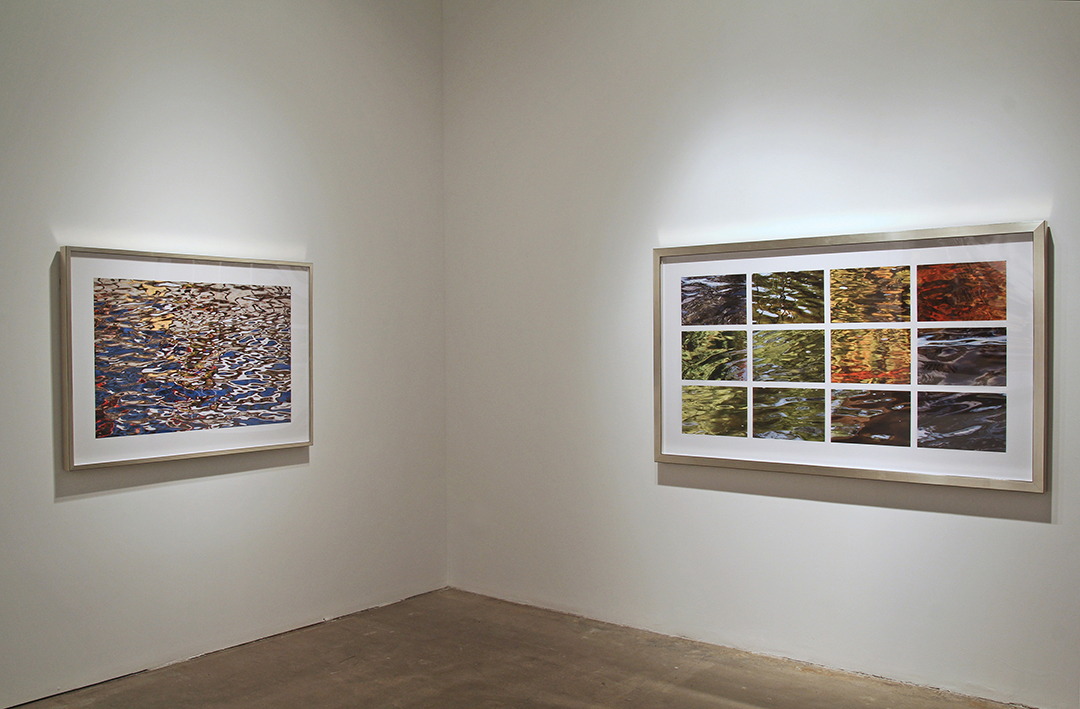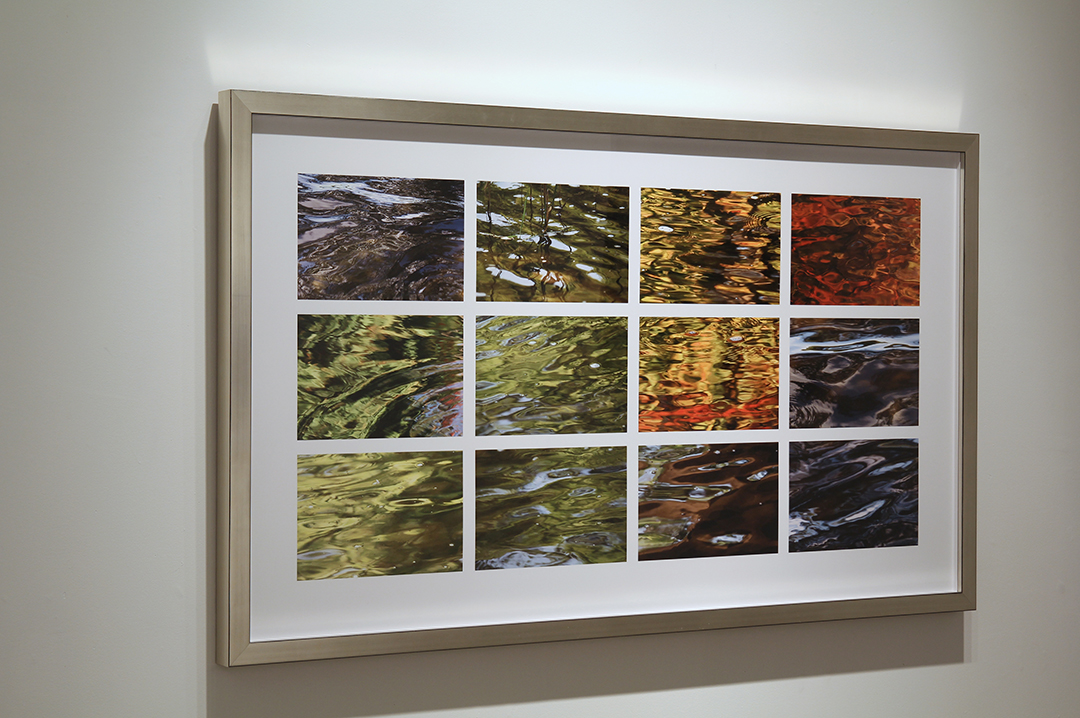State of Flux, River Suite, Wave Patterns
Several new bodies of work in photography and video dwell in the transitional, liminal spaces between natural and built environments, abstraction and representation, photography and painting, nature and culture. The State of Flux photographs, River Suite photo-work and Wave Patterns video all employ water imagery within a conceptual framework to investigate the intersections between these dualities. As in my previous projects that presented the passage of time as being embodied in the flow of water, in these new works, water imagery encapsulates the idea of continual change.
|
|
Drawing on the evocative potential of water, each image in the State of Flux photographic series embraces the vitality of one particular instant. These unusual images reveal a paradoxical relationship to the “real”. Although each photograph captures a specific place and time that occurred in front of the camera, the resulting images transcend the familiar details and conventions of land- or water-scape to create newly abstracted worlds. While the medium of photography allows the distillation of gestures and forms that are otherwise blurred and imperceptible to the naked eye, these hyper-real photographs nonetheless have strong references to modernist painting in their abstraction and engagement with surface. The unidentified reflections remain ambiguous and enigmatic, as texture, colour and movement evoke an intuitive response. In our accelerated world of perpetual change and quick perceptions, each work offers a moment to savour, plucked from the water’s constant state of flux for our prolonged contemplation. |
|
|
|
| In River Suite, twelve close-up photographs that capture the changing light effects in rippling waves are arranged in a matrix as a unified group; yet, we are always aware that the whole is made up of its constituent, diverse parts. In its conceptual approach and compositional process, the work explores the tensions and continuities between several dualities. Although informed by the idea that landscape, in its framing of our natural environment, is a cultural construct that developed with and in contrast to urbanization, River Suite nonetheless undermines traditional conventions of the genre. Instead of presenting a single view at a fixed moment from a detached, distant perspective, it creates a composite of multiple viewpoints that reveal the power and beauty of the water, constantly evolving over time. With no visible horizon or long view, the viewer is immersed in the water’s expanse. While documenting the particularities of location, the imagery nears abstraction in its celebration of colour, light and form. The use of the grid, a structure of the built environment, imposes order onto the freely moving water, arranging the natural imagery into a composition. | |
In a related video, Wave Patterns, twelve video channels are arranged in a matrix of three channels high by four wide. Shot at several Canadian locations, each channel captures flowing water and its shifting reflections, colours, moods and movements. Together they form an ever-changing tapestry as each video evolves itself and in concert with the others, beginning with a single channel and culminating in the full grid of twelve. Channels fade in and out individually and in groups as the rectangular grid pattern fluidly builds up, breaks down, and builds itself up again. Abstraction emerges in the colour and forms of the water imagery, as well as in the visual patterns created by the play of oscillating and fluctuating rectangles of video. By contrasting the free-flowing water with its containment within the ordered structure of the grid, the work explores the intersections between the natural world and the human impulse to build and make order. The audio track contributes to the work’s constructive process by building an unexpected soundscape of construction sounds; the noises of different tools are associated with the appearance of particular video channels according to the rhythm of the editing. In the relationships of its many parts to the whole, the video projection creates a dynamic choreography of change over time, simultaneously exploring both fragmentation and unity. |
|
|
|
|
|
